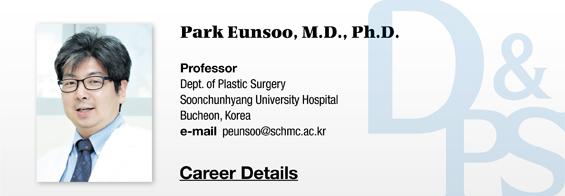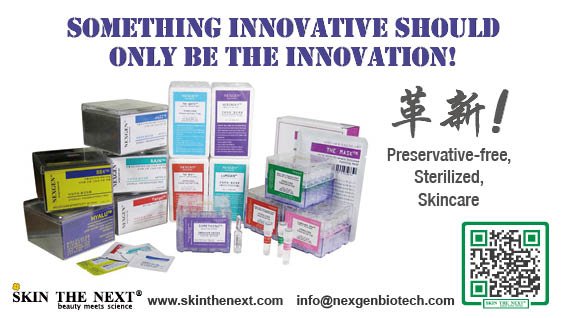An adult stem cell is capable of differentiating after in-vivo transplantation, in accordance with organ characteristics, and cross differentiation to different types of cells from the original cell profile. With the discovery of the potential to be differentiated to different cells, cell treatment with adult stem cells is becoming more and more realistic.
An adipose tissue, which is easily harvested in a large amount, is suitable for stem cell harvesting. Adipose-derived stem cells (ASCs) are known to show stable growth and proliferation and be able to differentiate to various cells as a bone marrow stem cell does.
ASCs can be currently obtained by separation and culture of stromal vascular fraction (SVF), which has mature adipose cells and red blood cells removed from adipose tissues. This SVF contains preadipocytes, lipoblasts, microvascular endothelial cells, smooth muscle cells and various other ingredients, other than multipotent cells. Therefore, SVF is refined by using antibody specific to cell surface protein or by density gradient centrifuge. A number of studies are attempting to find fraction with high survival rate and purity or appropriate fraction that may differentiate to an adipose cell.
[Advertisement] SKIN THE NEXT – Manufacturer: NEXGEN(www.nexgenbiotech.com)
The origin of human ASCs (hASCs) has not been established yet. An experimental study reported that capillary wall is made of flat endothelial cells only, without any smooth muscle layer or connective tissue layer in the surrounding. At the basement membrane layer of an endothelial cell are connective tissue cells scattered, which are called pericytes. These cells are suspected to be the origin of hASCs or subpopulation of fibroblast in an adipose tissue.
ASCs with polipotency can differentiate to most mesenchymal cells, including an adipose cell, osteoblast, chondroblast, myofibroblast, a hematopoietic cell and a myocardial cell. Differentiation to a nerve cell, which is a ectodermal tissue, has been also confirmed by biological and histological examinations. Human adipose tissues are generally harvested by liposuction, and dissolved with enzyme and centrifuged (1200g, 10 min). Then the upper adipose cell and lower SVF are separated. Lower SVF is proliferated by culture with Dulbecco’s Modified Eagle’s Medium(DMEM)and 10% FBS, and then differentiated to chondrocyte, osteocyte, myocyte and adipocyte by treating with each differentiation induction medium.
1. Adipogenic Differentiation
Fat graft is expected to induce ASC activity, which plays a role in differentiation to adipocyte and angiogenesis, in addition to the transplantation of mature adipocyte. Cell-assisted fat graft, in which ASCs are isolated and reinjected, is becoming more popular to enhance andipogenesis and angiogenesis as well as to increase the survival rate of transplanted fat. Automatic cell isolation devices for direct use in operation room are also being commercialized.
It takes 14 days for differentiating to adipocyte in a laboratory. Lipid in the cell can be confirmed later by Oil Red O stain. Insulin and glucocorticoid are the most important stimulants that are involved in multipotent stem cell differentiation to adipocyte.
The first step of in vitro adiposegenesis is the stimulation of IGF-1. Growth hormone, glucocorticoid, insulin and fatty acid are all stimulants in the early or late phase of adipogenic differentiation. cAMP inducers such as Isobutyl Methyxanthine (IBMX), LPL(Lipoprotein Lipase), PPAPR(Peroxisome Proliferator-activated Receptor) and EbP(Enhancer binding Proteins) are added to the adipogenic differentiation-inducing culture medium.
High concentration retinoid, interferon, and cytokines, including IL-1, IL-2, TGF-beta and TNF-alpha, are known as strong inhibitors of adipogenic differentiation. Furthermore, the inhibitory effect of TGF-beta can be exerted alone and also by inhibiting the adipogenic differentiation by IGF-1. On the contrary, it has been reported that treatment with factors involved in angiogenesis, such as Vascular Endothelial Growth Factor (VEGF), Fibroblast Growth Factor-2 (FGF-2) and Platelet Derived Growth Factor-BB (PDGF-BB), resulted in enhanced early angiogenesis and adipose tissue growth for 6 weeks in the mouse model.
2. Osteogenic Differentiation
ASC can be induced to be differentiated to osteoblast and be used in nonunion or malunion of fracture. That is, it may be possible to stimulate bone transplantation or joint fusion. After the first evidence of in vivo bone formation was presented, ASC was isolated from an epididymal adipose tissue in a white rat and differentiated. This cell was retransplanted in the subcutaneous fat layer of the white rat and bone formation in 8 weeks was confirmed. Reconstruction of skull defects of a fatal size in a rat was also attempted. In a study where ASC was coated with apatite, 70-90% of the defect was cured in 12 weeks by using polylactic-coglycolic acid scaffold. The study also confirmed no difference between a bone marrow-derived stem cell and an adipose-derived stem cell. In a chromosomal examination conducted at week 2, 96-99% of the newly formed bone was found as derived from the transplanted female cell, not from the recipient male. Osteogenic differentiation in human was first reported in 2004 by Lendeckel et al. They introduced a case of extensive skull defect (7-year-old female) of 120㎠ by severe head injury and decompressive craniotomy 1 year ago. 15mL of cancellous bone from 15mL of the pubis and 10mL of ASC were harvested (it took 2 hours for cell processing) for the treatment. Extensive bone regeneration was confirmed at the defect site by computed imaging in 3 months. Further clinical study is needed to a confirm safe and effective method and result.
Examethasone are commonly used for stimulation of in vitro osteogenic differentiation in most experimental studies, but 1,25-dihydroxyvitamin D2 can be used instead Dexamethasone or vitamin D need to be included in the osteogenic induction medium.
Ascorbic acid, which increases non-collagenous bone matrix protein, and β-glycerophsphate, which is required for calcification and mineralization of extracellular matrix, are also needed. Another study reported osteogenic differentiation of ASC after short reaction (15 min) with Bone Morphogenic Protein2 (BMP-2: TGF-β superfamily), a growth factor of goat ASC. It also reported that osteogenic induction protocol could be developed by simple pretreatment before reinjection for use in human ASC.
ASC was found to induce osteogenic differentiation of calcified extracellular matrix in vitro, as confirmed by 2% Alizarin red staining. Specific genemarkers of osteogenic differentiation included osteocalcin (OCN), osteopontin (OPN), runt-related protein-2 (RUNX-2), collagen Ia (COL1A) and alkaline phosphatase (ALP). It generally takes more than 28 days for differentiation.
3. Chondrogenic Differentiation
Chondrogenic differentiation of ASC can be useful for the treatment of traumatic joint or arthritis. Nathan et al. performed a study of treating cartilage defect with ASC in a rabbit. A defect of 6×3×0.5mm was made on femoral articular process of the rabbit with a perforator The defect site was treated with ASC and serum fibrinogen and compared with the previous method. The result found superior ability of osteochondral healing. Because it is difficult to stimulate in vivo cartilage regeneration, this method is considered as a promising result for cartilage regeneration in the future.
In vitro chondrogenic differentiation of ASC is induced by adding insulin, TGF-β1 and ascorbin acid in the culture medium. After several weeks of 3-dimensional culture of cells in calcium alginate gel for formation of type 2 and type 4 collagens and proteoglycan chondroitin sulfate (aggrecan), chondrial expression of extracellular matrix protein is increased and ASC is differentiated to cartilage. Micromas culture technology allows chondrogenic culture and differentiation of ASC by compact placement of cells similar to biological environment. That is, differentiation-related genes may be expressed when cells are distributed in low density but the differentiation potential may be decreased; on the other hand, differentiation becomes better with high density cell distribution. Alcian blue staining is used for chondrogenic differentiation analysis, and chondrogenic differentiation genes, including SOX-9, aggrecan and collagen II, are used for genetic analysis.
4. Myogenic Differentiation
ASC can be differentiated to skeletal muscle and smooth muscle fiber by culturing in culture medium containing 5% horse serum and glucocorticoid (hydrocorisone, dexamethasone). It has been reported that cells are fused and forms myotube, which generates protein marker for myocyte, when cultured in myogenic induction medium. The yield rate and reproduction rate of myogenic differentiation is the lowest among all differentiated cells. Cell differentiation is typically confirmed by skeletal muscle myosin staining after 2-3 weeks.
5. Neural Differentiation
Differentiation of ASC to an ectodermal neural tissue has been also reported. There is still controversy over whether it is differentiated to a neural supporting mesenchymal tissue or a neural cell itself. A bone marrow stem cell has been used for many studies on central nervous system regeneration, and some studies used partial ASC for peripheral nerve regeneration. Neural differentiation was induced on monolayer culture medium containing neural induction medium in an experimental study. Reverse phase microscope later confirmed peripheral nerve regeneration from ASC by observing cells differentiated in the form of neurocyte. NeuN antibody responds to neurocyte, while S100 and p75 antibodies respond to a supporting cell. Differentiation of ASC to neurocyte and the supporting cell was confirmed by using these antibodies. Another study made 15mm defect on sciatic nerve of a white rat and connected it with a silicon tube. Neural progenitor cell differentiated from ASC was mixed with collagen gel and transplanted in the tube. The histologic nerve regeneration was superior to the control group and neural transmission rate on electromyography was also faster than the control group in 4 weeks and 8 weeks later, suggesting the involvement of ASC in neural differentiation. Neural differentiation can be confirmed by glial fibrillary acidic protein(GFAP), a neurocyte specific marker, after inducing neural differentiation for 2-3 weeks.
6. Endothelial Cell Differentiation
In the early 1990s, lipoaspirate was analyzed based on the expression of EN4, an antigen specific to an endothelial cell known to respond to vWF staining and CD31 antigen. The result found that endothelial cell was the main cell type of SVF. Pig peritoneal fat tissue, containing this cell, was cultured and attached to polytetrafluoroethylene artificial blood vessel. In this study, the cells attached to the transplanted blood vessel means endothelialization. However, it would be more reasonable to say that the origin of endothelial cell is SVF, not ASC, because overall SVF was used for the study. Further studies are needed to determine whether ASC is useful for patency of vascular graft and long-term outcome.
ASC expresses and releases various hematopoietic cell cytokines, including Macrophage Colony-Stimulating Factor (M-CSF) and Granulocyte–Macrophage Colony-Stimulating Factor (GM-CSF). There has been an assertion that anti-apoptotic factors, including VFGF, hepatocyte growth factor (HGF) and TGF-beta, and angiogenic factor is released. When the oxygen level is low, the secretion of VFGF is markedly increased, resulting in the increased number of endothelial cells and decreased apoptosis.
ASC was injected in an in-vivo model of lower leg hemorrhage of nude mice. Limb blood flow and peripheral density revealed markedly improved circulation. It seems that ASCs induced the change by angiogenesis activity. The hypothesis that ASCs secreting growth factors, such as VEGF, stimulated angiogenesis by paracrine effect, seems more promising than the hypothesis that ASCs are directly differentiated to endothelial cells. ASC injection study was also conducted in 20 patients with fibrosis and thoracic osteoradionecrosis due to chronic tisssue ischemia after radiotherapy. All patients involved in the study achieved better outcome with gradual tissue regeneration as angiogenesis and hydration activities progressed. It is still not clear, however, if the outcome was solely attributable to ASCs, because the injected adipose tissue contained various other types of cells. Nevertheless, this shows the possibility of treatment for improving microvascular pathology. ASC injection has been attempted as the first treatment for ischemic cutaneous necrosis due to intravenous injection of filler or fat.
-To be continued-
▶ Previous Artlcle : #6. Stem Cell: Adipose-Derived Stem Cell Ⅰ
▶ Next Artlcle : #8. Platelet Rich Plasma





















